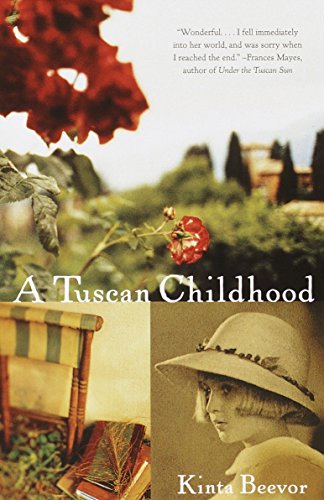This post contains affiliate links. As an Amazon Associate I earn from qualifying purchases
The sparkling memoir of an idyllic, bohemian childhood in an enchanted Tuscan castle between the World War I and World War II.
When Kinta Beeevor was five, her father, the painter Aubrey Waterfield, bought the sixteenth-century Fortezza della Brunella in the Tuscan village of Aulla. There her parents were part of a vibrant artistic community that included Aldous Huxley, Bernard Berenson, and D. H. Lawrence. Meanwhile, Kinta and her brother explored the glorious countryside, participated in the region’s many seasonal rites and rituals, and came to know and love the charming, resilient Italian people. With the coming of World War II the family had to leave Aulla; years later, though, Kinta would return to witness the courage and skill of the Tuscan people as they rebuilt their lives. Lyrical and witty, A Tuscan Childhood is alive with the timeless splendour of Italy.What could be more romantic than living in an ancient fortress, dining in its rooftop garden, and sleeping under the stars? English artists and intellectuals like the author’s parents (painter Aubrey Waterfield and journalist Lina Duff Gordon) have traditionally adored the Italian countryside, and their daughter’s enchanting memoir describes the happy haven they found near the Tuscan town of Aulla. Kinta was only 5 in 1916 when she made her first trip by pony trap up the steep road to their hilltop abode, and neither exile to English boarding school nor the Second World War could keep her away for long. Famous friends like Bernard Berenson and D.H. Lawrence make cameo appearances, but the real stars are the earthy, dignified Tuscan peasants who worked for her family. Through them, the author immersed herself in the timeless rhythms of rural existence. The text’s highlights include a vivid account of vendemmia, the grape harvest, and the glories of Italian cuisine. Anyone who can read her descriptions of the local polenta, zuppa di verdura, and other meticulously prepared dishes without feeling a rumble in the stomach truly has no interest in food. Though Beevor’s final chapters note the changes that have come to Tuscany in the postwar era, her recollections pay loving tribute to a way of life that truly seems eternal. –Wendy Smith
This post contains affiliate links. As an Amazon Associate I earn from qualifying purchases
